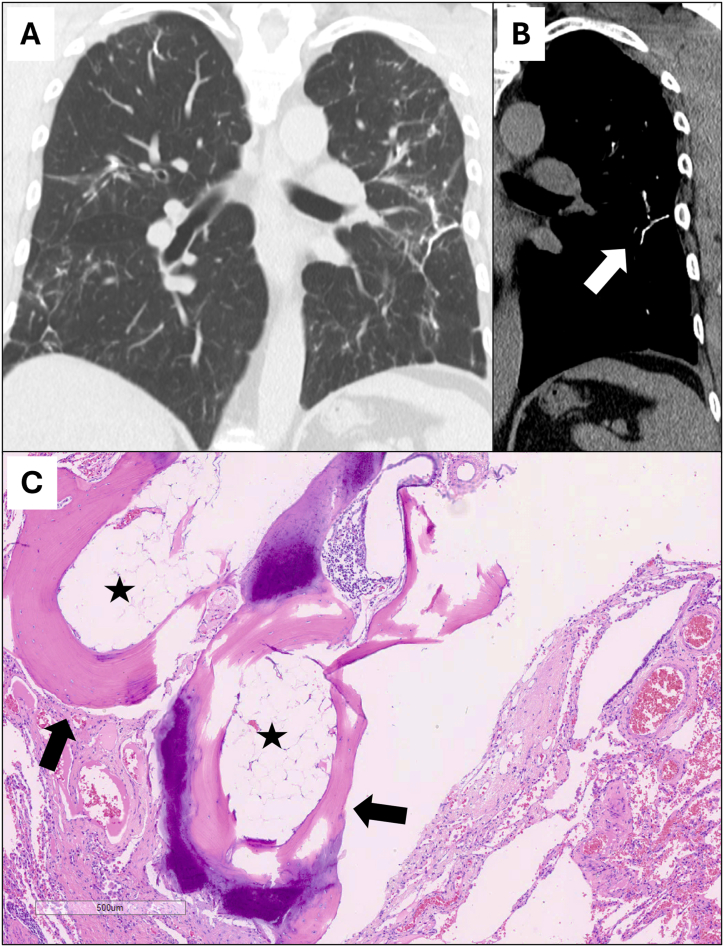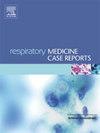Dendriform pulmonary ossification in military combat veterans: A case series
IF 0.7
Q4 RESPIRATORY SYSTEM
引用次数: 0
Abstract
Dendriform pulmonary ossification (DPO) is a rare condition characterized by mature bone formation in the lung. DPO has been linked to various conditions, but little is known about the link between DPO and hazardous airborne exposures. We queried research databases of military personnel evaluated for deployment-related respiratory diseases at two occupational pulmonary medicine clinics (Colorado, USA) for diagnoses of DPO, and summarized demographics, Gulf War military deployment history, medical history, and pulmonary function testing. Chest imaging was independently reviewed and scored by a thoracic radiologist, and all cases had undergone lung tissue biopsy. We identified five male combat veterans with DPO, median age 49 years [range: 32–64]. All had deployed to Southwest Asia or Afghanistan during the First or Second Gulf War, and all reported frequent, intense exposure to diesel exhaust, burn pit emissions, and sandstorms. Lung physiology was abnormal in all cases. The most prevalent chest imaging and histopathology findings were airway-centric injury, inflammation, and retained particulate matter, suggesting substantial hazardous exposure during military deployment. This case series of a rare lung disease from the only two contemporary Colorado clinics serving previously deployed veterans highlights a potential link between airborne hazards and lung injury leading to DPO. A high index of clinical suspicion combined with a detailed occupational history may reveal additional exposure-related associations with DPO. Access to large medical databases of military veterans with linkage to exposure histories may further elucidate risk factors for lung injury with ossification, paving the way for targeted prevention.

退伍军人的树状肺骨化:一个病例系列。
树突状肺骨化(DPO)是一种罕见的肺成熟骨形成的疾病。DPO与各种疾病有关,但对DPO与有害空气接触之间的联系知之甚少。我们查询了在美国科罗拉多州两家职业肺医学诊所接受部署相关呼吸道疾病评估的军事人员的研究数据库,以诊断DPO,并总结了人口统计学、海湾战争军事部署史、病史和肺功能测试。胸部影像由胸部放射科医师独立复查并评分,所有病例均行肺组织活检。我们确定了5名患有DPO的男性退伍军人,平均年龄49岁[范围:32-64岁]。在第一次或第二次海湾战争期间,所有人都被部署到西南亚或阿富汗,并且都报告经常暴露在柴油废气,燃烧坑排放物和沙尘暴中。所有病例肺生理均异常。最常见的胸部影像学和组织病理学发现是气道中心性损伤、炎症和残留的颗粒物,表明在军事部署期间存在大量危险暴露。这一罕见肺部疾病的病例系列来自科罗拉多州仅有的两家为以前部署的退伍军人服务的诊所,突出了空气传播危害与导致DPO的肺损伤之间的潜在联系。高临床怀疑指数结合详细的职业史可能揭示额外的暴露与DPO相关的关联。访问与暴露史相关的退伍军人大型医疗数据库可以进一步阐明肺损伤骨化的危险因素,为有针对性的预防铺平道路。
本文章由计算机程序翻译,如有差异,请以英文原文为准。
求助全文
约1分钟内获得全文
求助全文
来源期刊

Respiratory Medicine Case Reports
RESPIRATORY SYSTEM-
CiteScore
2.10
自引率
0.00%
发文量
213
审稿时长
87 days
 求助内容:
求助内容: 应助结果提醒方式:
应助结果提醒方式:


